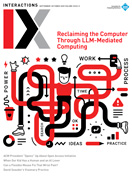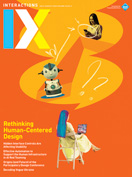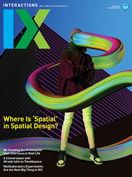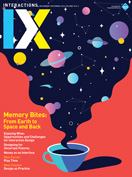Authors:
Jeni Paay
Wine…makes most drinkers think — Plato, Cratylus, 388 BCE Insights → Making and drinking wine are important parts of our social, spiritual, and economic lives. → The wine industry is under threat from changing environmental conditions due to global warming. → HCI and AI can tackle the challenges and opportunities for enhancing wine consumption and supporting wine production for the future. Wine has been an important part of people's ceremonial, spiritual, physical, and emotional sustenance for more than 8,000 years. Ideally, it will continue to be for many more—but the wine industry, like many others, is facing serious…
You must be a member of SIGCHI, a subscriber to ACM's Digital Library, or an interactions subscriber to read the full text of this article.
GET ACCESS
Join ACM SIGCHIIn addition to all of the professional benefits of being a SIGCHI member, members get full access to interactions online content and receive the print version of the magazine bimonthly.
Subscribe to the ACM Digital Library
Get access to all interactions content online and the entire archive of ACM publications dating back to 1954. (Please check with your institution to see if it already has a subscription.)
Subscribe to interactions
Get full access to interactions online content and receive the print version of the magazine bimonthly.






